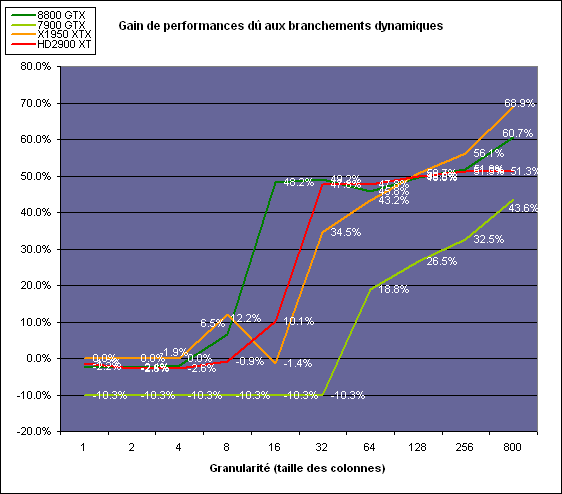santyhammer
Newcomer
I think the R600 should be faster than the 8800GTX... It can use GDDR4, doubles the stream units and bandwith is a lot more... I suspect the problem are some immature drivers ( and also immature DX10 ). All the new things need to mature a few before to start serious benchmark test... I remember when Metal Gear Solid came to PC.. the Psychomantis invisibility cubemap made my PC almost to hang due to the bad speed... one year after went like silk. Vista and the Catalyst need some time to be well optimized.
I'm gonna buy a R600 definitely because:
1) Is cheaper than the NVIDIA ones.
2) The preliminary benchmarks don't make it justice ). Let's wait a few so the drivers and test mature a bit ( personally I'll wait for 3dmark 2007 before to judge the R600 performance ). Speed is not important for me, I just want alll the DX10 features at low cost.
3) Comes in AGP ( or almost is what I saw here http://xtreview.com/addcomment-id-2...-HD-2900-XTX-and-AGP-Radeon-HD-2600-2400.html ) becase I lack a PCI-E motherboard. The 2600HD Pro looks very nice for me... no need for external power connection, 128bits GDDR3 1Ghz memory, passive silent dissipator, small and nice.
4) I saw that wonderful terrain tessellation and Humus said wasn't made with the GS so I bet the R600 has a tessellator which I want to play with! If the R600 GS if is really better than the 8800 will help too.
5) The HDMI and integrated "sound card" looks good.
6) Its new AA modes are very interesting.
So i'm trying to decide if I must get that 2600HD Pro or to wait a few and get a Barcelona CPU with a DX10 integrated VGA in the motherboard! ( or pray to NVIDIA so they release the 8600 in AGP! )
I'm gonna buy a R600 definitely because:
1) Is cheaper than the NVIDIA ones.
2) The preliminary benchmarks don't make it justice ). Let's wait a few so the drivers and test mature a bit ( personally I'll wait for 3dmark 2007 before to judge the R600 performance ). Speed is not important for me, I just want alll the DX10 features at low cost.
3) Comes in AGP ( or almost is what I saw here http://xtreview.com/addcomment-id-2...-HD-2900-XTX-and-AGP-Radeon-HD-2600-2400.html ) becase I lack a PCI-E motherboard. The 2600HD Pro looks very nice for me... no need for external power connection, 128bits GDDR3 1Ghz memory, passive silent dissipator, small and nice.
4) I saw that wonderful terrain tessellation and Humus said wasn't made with the GS so I bet the R600 has a tessellator which I want to play with! If the R600 GS if is really better than the 8800 will help too.
5) The HDMI and integrated "sound card" looks good.
6) Its new AA modes are very interesting.
So i'm trying to decide if I must get that 2600HD Pro or to wait a few and get a Barcelona CPU with a DX10 integrated VGA in the motherboard! ( or pray to NVIDIA so they release the 8600 in AGP! )
Last edited by a moderator:


